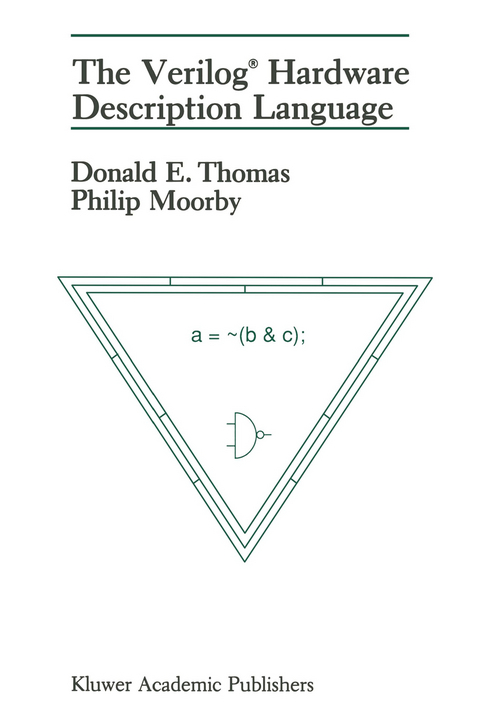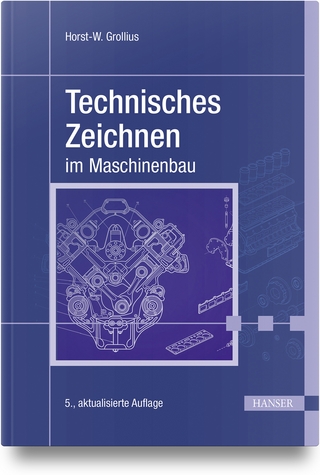
The Verilog® Hardware Description Language
Springer-Verlag New York Inc.
978-1-4613-6784-0 (ISBN)
The Verilog language is a hardware description language which provides a means of specifying a digital system at a wide range of levels of abstraction. The language supports the early conceptual stages of design with its behavioral level of abstraction, and the later implementation stages with its structural level of abstraction. The language provides hierarchical constructs, allowing the designer to control the complexity of a description. Verilog was originally designed in the winter of 1983/84 as a proprietary verification/simulation product. Since then, several other proprietary analysis tools have been developed around the language, including a fault simulator and a timing analyzer; the language being instrumental in providing consistency across these tools. Now, the language is openly available for any tool to read and write. This book introduces the language. It is sometimes difficult to separate the language from the simulator tool because the dynamic aspects of the language are defined by the way the simulator works. Where possible, we have stayed away from simulator-specific details and concentrated on design specification, but have included enough information to be able to have working executable models. The book takes a tutorial approach to presenting the language.
1. Verilog — A Tutorial Introduction.- 1.1 Describing Digital Systems.- 1.2 Getting Started.- 1.3 Module Hierarchy.- 1.4 Behavioral Modeling.- 1.5 Summary.- 1.6 Exercises.- 2. Behavioral Modeling Constructs.- 2.1 Process Model.- 2.2 If-Then-Else.- 2.3 Loops.- 2.4 Multi-way branching.- 2.5 Functions and Tasks.- 2.6 Summary.- 2.7 Exercises.- 3. Concurrent Process Statements.- 3.1 Concurrent Processes.- 3.2 Events.- 3.3 The Wait Statement.- 3.4 Disabling Named Blocks.- 3.5 Quasi-continuous assignment.- 3.6 Sequential and Parallel Blocks.- 3.7 Exercises.- 4. Logic Level Modeling.- 4.1 Introduction.- 4.2 Logic Gates and Nets.- 4.3 Continuous Assignment.- 4.4 Parameterized Definitions.- 4.5 Logic Delay Modeling.- 4.6 Delay Paths Across a Module.- 4.7 Summary.- 4.8 Exercises.- 5. Defining Gate Level Primitives.- 5.1 Combinational Primitives.- 5.2 Level- and Edge-Sensitive Sequential Primitives.- 5.3 Shorthand Notation.- 5.4 Mixed Level- and Edge-Sensitive Primitives.- 5.5 Summary.- 5.6 Exercises.- 6. Switch Level Modeling.- 6.1 A Dynamic MOS Shift Register Example.- 6.2 Switch Level Modeling.- 6.3 Ambiguous Strengths.- 6.4 Summary.- 6.5 Exercises.- 7. Two Large Examples.- 7.1 The miniSim Example.- 7.2 The 8251A Example.- 7.3 Exercises.- Appendix A. Lexical Conventions.- A.1 White Space and Comments.- A.2 Operators.- A.3 Numbers.- A.4 Strings.- A.5 Identifiers, System Names, and Keywords.- Appendix B. Verilog Operators.- B.1 Table of Operators.- B.2 Operator Precedence.- B.3 Operator Truth Tables.- B.3.1 Bitwise AND.- B.3.2 Bitwise OR.- B.3.3 Bitwise XOR.- B.3.4 Bitwise XNOR.- B.4 Expression Bit Lengths.- Appendix C. Verilog Gate Types.- C.1 Logic Gates.- C.2 BUF and NOT Gates.- C.3 BUFIF and NOTIF Gates.- C.4 MOS Gates.- C.5 Bidirectional Gates.- C.6 CMOS Gates.- C.7 Pullupand Pulldown Gates.- Appendix D. Registers, Memories, Integers, and Time.- D.1 Registers.- D.2 Memories.- D.3 Integers and Times.- Appendix E. System Tasks and Functions.- E.1 Display and Write Tasks.- E.2 Continuous Monitoring.- E.3 Strobed Monitoring.- E.4 File Output.- E.5 Simulation Time.- E.6 Stop and Finish.- E.7 Random.- Appendix F. Formal Syntax Definition.- F.1 Source Text.- F.2 Declarations.- F.3 Primitive Instances.- F.4 Module Instantiations.- F.5 Behavioral Statements.- F.6 Specify Section.- F.7 Expressions.- F.8 General.
| Zusatzinfo | XV, 223 p. |
|---|---|
| Verlagsort | New York, NY |
| Sprache | englisch |
| Maße | 155 x 235 mm |
| Themenwelt | Sachbuch/Ratgeber ► Natur / Technik ► Garten |
| Informatik ► Weitere Themen ► CAD-Programme | |
| Informatik ► Weitere Themen ► Hardware | |
| Technik ► Elektrotechnik / Energietechnik | |
| ISBN-10 | 1-4613-6784-0 / 1461367840 |
| ISBN-13 | 978-1-4613-6784-0 / 9781461367840 |
| Zustand | Neuware |
| Haben Sie eine Frage zum Produkt? |
aus dem Bereich


